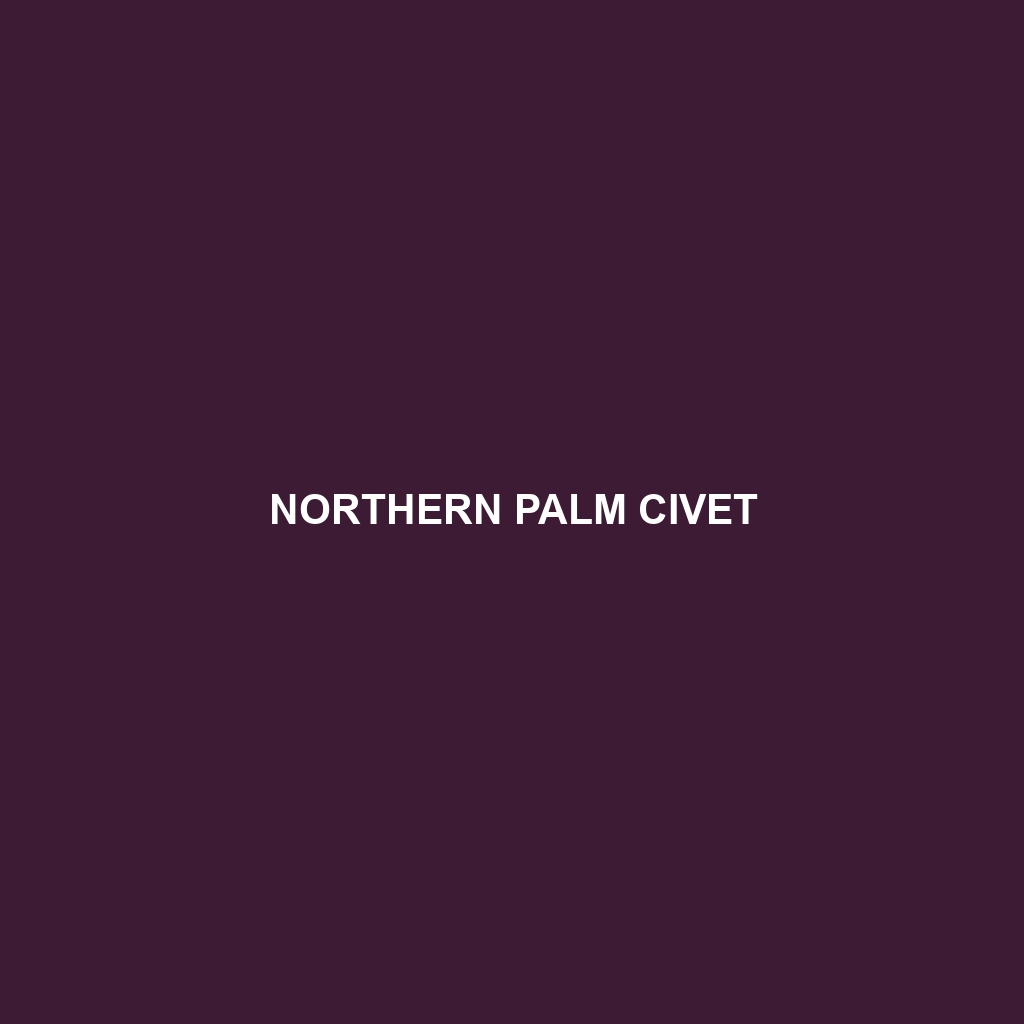Northern Palm Civet Overview
Common Name: Northern Palm Civet
Scientific Name: Paradoxurus hermaphroditus
Habitat
The Northern Palm Civet is primarily found in Southeast Asia, inhabiting tropical forests, secondary forests, and urban environments. It thrives in areas with dense tree canopies, often near water bodies. Geographic locations include parts of Indonesia, Malaysia, Thailand, and southern China, where the warm climate supports their natural behaviors and lifestyle.
Physical Characteristics
Northern Palm Civets are medium-sized mammals, typically weighing between 4 to 7 kg and measuring about 60 to 90 cm in length, with a tail that can add an additional 60 cm. Their fur is coarse, usually exhibiting a mix of gray, brown, and black, with distinctive markings. They have a long body, short legs, and a pointed snout, which aids in their foraging habits, making them unique among civet species.
Behavior
This species is primarily nocturnal, exhibiting a range of interesting behaviors. Northern Palm Civets are known for their arboreal lifestyle, spending the majority of their time in trees. They are solitary animals but can be seen in small groups when foraging. Their vocalizations include a range of grunts and whistles, which serve to communicate with one another, especially during mating seasons.
Diet
The diet of the Northern Palm Civet is varied, consisting primarily of fruits, particularly berries and figs, as well as insects and small vertebrates. They are known for their role in seed dispersal, thereby contributing to the regeneration of their forest habitat. This frugivorous diet is crucial for their survival and impacts local biodiversity.
Reproduction
Northern Palm Civets typically breed once a year, with mating occurring during the late rainy season. After a gestation period of approximately 60-70 days, females give birth to 2-4 young. The juveniles are weaned at around two months and become independent after six months, learning essential survival skills during this time.
Conservation Status
The Northern Palm Civet is currently listed as Least Concern by the IUCN, though habitat loss due to deforestation poses ongoing threats. Conservation efforts are crucial to maintain their populations, especially in rapidly urbanizing areas.
Interesting Facts
Did you know that the Northern Palm Civet is often associated with the production of kopi luwak, a unique coffee made with beans that have been digested and excreted by civets? This unique aspect of their diet has garnered global attention and contributed to their cultural significance in some regions.
Role in Ecosystem
The Northern Palm Civet plays a significant role in its ecosystem, primarily through its contribution to seed dispersal. As they consume a variety of fruits, they help maintain the health of forest ecosystems by ensuring the proliferation of diverse plant species. Additionally, they serve as prey for larger predators, thus contributing to the overall balance of their habitat.
This HTML format provides a structured and optimized description that is suitable for publication on a website, effectively incorporating relevant keywords and ensuring ease of readability.
